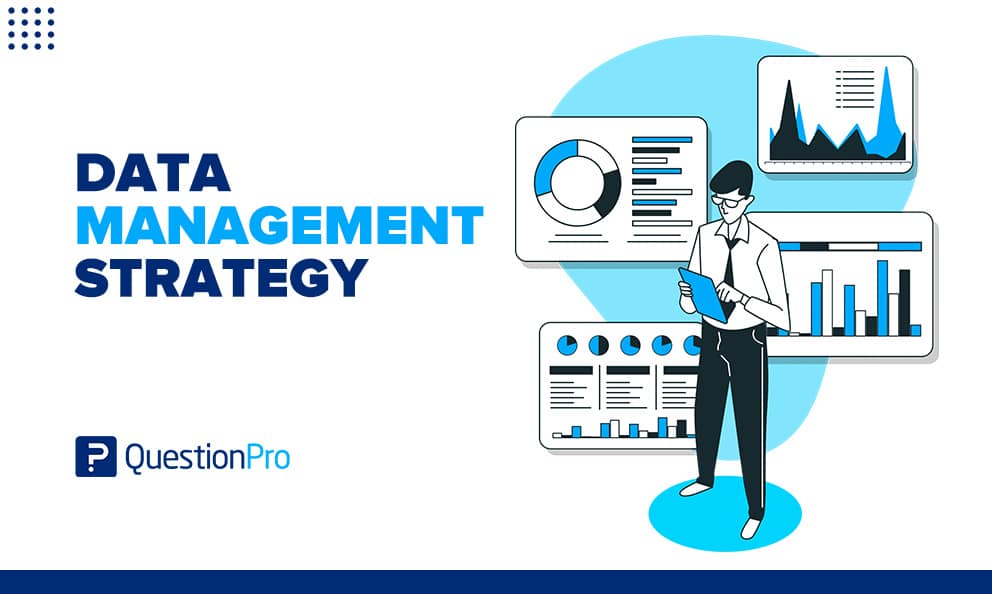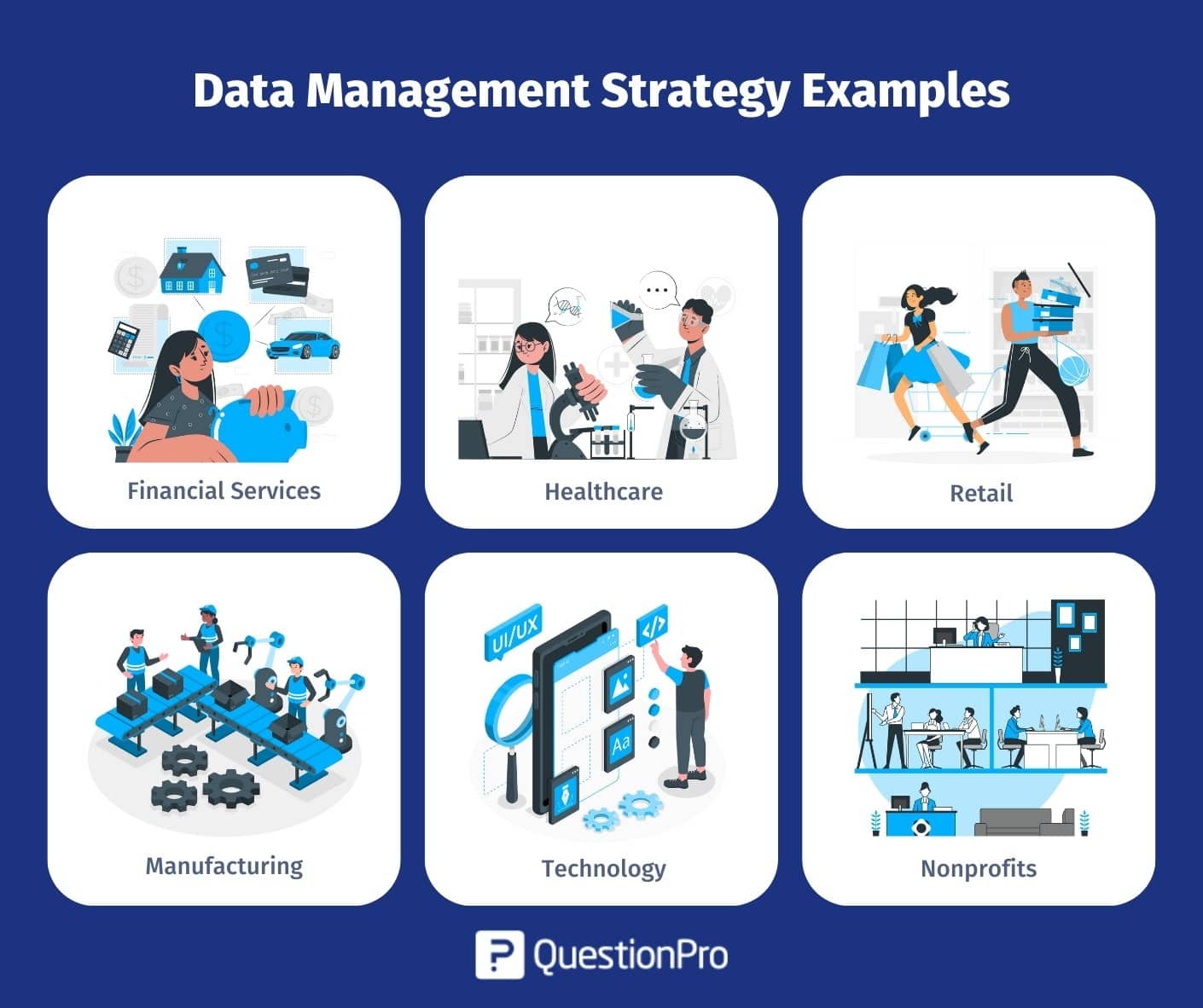
Data is essential for organizations to do better in this competitive business world. But collecting, analyzing, and managing information is challenging. And because of this, developing a data management strategy is one of the most critical parts of the data management processes.
If your company produces a ton of raw data and you’re seeking ways to arrange it to use these data assets later for data migration, data integrity, data analysis, data modeling or data warehouse, you’ve come to the right place. Read on to learn about the data management plan and ways to build an effective data strategy.
What is a Data Management Strategy?
A data management strategy is a plan for collecting and managing master data so authorized people can use and obtain it effectively. The process should consider the data’s amount, type, location, and users’ needs.
A data management plan often consists of three parts: an assessment of the company’s data storage in its current condition, a vision for where the business wants to go, and a road map to get there for business growth. Data governance, data architecture, data quality, data security, data integrity, data warehouse and data privacy are examples of additional data management components.
We learned the definition of an effective data management strategy from above. Now let’s get into the effective way of building a master data management plan.
Importance of Data Management Strategy
A data management strategy is crucial for organizations of all sizes and across various industries for several reasons:
Data as a Strategic Asset:
In the digital age, data has become one of the most valuable assets for organizations. A well-defined data management strategy helps organizations leverage their data for competitive advantage, innovation, and decision-making.
Data Quality and Accuracy:
Effective data management ensures that data is accurate, consistent, and reliable. Low data quality can lead to costly errors, misinformed decisions, and a loss of trust among stakeholders of business users.
Data Security:
Data breaches and cyberattacks are on the rise. A robust data management strategy includes security measures to protect sensitive data, access controls, and regular audits.
Data Integration:
Organizations often have reliable data spread across various systems and platforms. A data management strategy helps integrate and centralize data capabilities, making it accessible and usable for data analysis and reporting.
Decision-Making:
Access to timely and accurate data empowers decision-makers to make informed choices. A well-executed data management strategy ensures that data is available when needed and in a format that supports decision-making.
Scalability:
As organizations grow, their data volume also increases. A data management strategy should be scalable to accommodate growing data needs and evolving technologies.
A data management strategy is essential for organizations to unlock the full potential of their data, remain compliant with regulations, make informed decisions, reduce risks, and stay competitive in today’s data-driven business landscape. It is an integral part of modern business operations that can profoundly impact an organization’s success and resilience.
LEARN ABOUT: Data Management vs Data Governance
Effective Ways to Build a Data Management Strategy
It’s time to create an enterprise data management strategy if your business deals with information issues. Although developing and perfecting a plan that works best for your company will take time, you can start with these five steps.
1.Identification of business goals
Business objectives may guide data collection for it to be helpful. To create business goals, it is necessary first to identify the needs and difficulties of the organization.
To determine goals:
- Ask questions about the organization’s overall business objectives.
- Collect the data required to accomplish those goals.
- After obtaining data from the many organization stakeholders, develop a long-term data strategy that focuses on specific use cases and acts as the organization’s compass.
2.Identify your data needs
What information is needed to meet the business goals, and how will it be gathered? In the second phase of developing a data management plan, it’s critical to provide answers to each query type.
The kind of data you need, internal or external, organized or unstructured, or a combination of the two—will depend on your business goals. Finding and collecting the information will be more challenging after you’ve located it.
Make a structure that you can fill out with information. This assists in identifying missing data and offers an organized method for acquiring data, which is the next stage of this data management process. For instance, website or social media analytics may provide the essential data, or you could need to buy it from a third-party vendor.
3.build sustainable data processing
Creating data collection, preparation, storage, and distribution procedures is the next step in a data management strategy. Each step is essential to ensure that a company manages data consistently.
It’s crucial to ensure that all of these data management processes are automated, fast, user-friendly, and appropriate if you want to build them successfully. Specifying a “data steward” for each process is essential to maintaining a balance between data quantity and quality.
4.Put data governance in place
Data governance is one of the most crucial components of a data management plan. It helps data management become increasingly important as an organization’s data volume increases.
Data quality, security, privacy, transparency, ethics, access, and ownership are a few topics covered by data governance framework rules and processes. Not just those who are directly involved in data management, but everyone should be informed of these regulations. This helps effective data utilization ensured by good data governance policies in a company’s data.
5.Use the appropriate technologies
Organizations that want to develop a data management plan need to ensure they have the appropriate technology and software. According to research, technology is essential to a successful strategy. Because without it, a company cannot adequately gather or evaluate data.
Organizations must consider their technology requirements for data collection, storage, and analysis when developing their plan. They must then convey the insights gained from the data.
Technological solutions may make each of these steps in the data processing strategy more effective, guaranteeing that all stakeholders receive the data they require to make business choices.
6.Create a skilled team
Organizations frequently face issues while implementing a data management plan because of data owners’ ignorance. So, the team should know how to use data appropriately. And organization’s leaders need to provide their team the chance to do so.
They need to be aware of the benefits of raising information literacy and developing a culture that appreciates the use of data in all business decisions. Businesses can build data teams with more experience and the capacity to use a data management strategy by doing this entirely.
7.Implement the strategy
Implementing the data strategy is the final step. Finding any possible obstacles is a crucial part of this step. Once you’ve spotted them, it’s essential to decide who will lead the adjustments and to make the same modifications required to solve those difficulties.
Aspects of the strategy may vary as the demands of the organization change over time.
Data Management Strategy Examples

Financial Services:
A robust data management strategy is imperative in financial services. These institutions prioritize data security and compliance to protect sensitive financial information. Adhering to strict regulations such as GDPR and industry-specific standards, they also invest in customer data integration. By seamlessly combining data from various sources, including online transactions, branch visits, and call center interactions, financial institutions can gain a comprehensive view of customer behavior and preferences, enabling them to offer personalized services and enhance customer satisfaction.
Healthcare:
Within the healthcare sector, data management is critical, focusing on efficiently handling patient records. Healthcare organizations work diligently to ensure that electronic health records (EHRs) are securely stored, easily accessible to authorized personnel, and compliant with the Health Insurance Portability and Accountability Act (HIPAA). Furthermore, data management strategies in healthcare extend to leveraging analytics for patient care, enabling healthcare providers to identify trends, improve diagnoses, and proactively address potential health issues before they escalate.
Retail
In the world of retail, data management plays a pivotal role in inventory optimization. Retailers prioritize managing vast quantities of inventory data to balance stock levels, reduce carrying costs, and ensure product availability. Additionally, data management strategies encompass collecting and analyzing customer data from diverse touchpoints such as online purchases, loyalty programs, and in-store interactions. This data aids in tailoring marketing efforts, enhancing customer experiences, and driving sales.
Manufacturing:
Manufacturers emphasize data management in their supply chain operations. It involves efficiently managing data related to suppliers, production schedules, and quality control. Data-driven strategies enable manufacturers to enhance supply chain visibility, reduce lead times, and optimize procurement processes. Moreover, data analytics are used to implement predictive maintenance, which minimizes downtime and lowers maintenance costs by forecasting when machinery requires servicing.
Technology:
Technology companies focus on managing product development data as a cornerstone of their data management strategy. It encompasses tracking and resolving software bugs, collecting user feedback, and managing feature requests. Additionally, tech firms often explore avenues for monetizing their data assets through partnerships, data licensing, or creating new data-driven products and services that align with their overall business objectives.
Nonprofits:
Nonprofit organizations employ data management strategies to support their missions. It includes managing donor and fundraising data, helping nonprofits engage with supporters, and driving their initiatives. Furthermore, data-driven insights empower nonprofits to make informed decisions, allocate resources efficiently, and measure the impact of their programs, ultimately maximizing their positive social and environmental contributions.
QuestionPro for Data Management Strategy
QuestionPro is a survey and research platform primarily focusing on collecting and analyzing data through surveys and feedback. While QuestionPro is not a dedicated data management platform, it can support aspects of your data management strategy, especially regarding data collection and some preliminary analysis. Here’s how you can use QuestionPro in the context of a data management strategy:
Data Collection:
QuestionPro allows you to create and distribute surveys to collect data from various sources, including customers, employees, or research participants. You can use surveys to gather structured data, such as customer feedback, market research data, or employee engagement data.
Data Integration:
QuestionPro can integrate with other tools and platforms to streamline data collection and management. For example, you can combine it with customer relationship management (CRM) systems or other data sources to consolidate data into a central repository.
Data Quality:
While QuestionPro can’t directly address all data quality issues, it does offer features like validation rules and response validation to help ensure data accuracy and consistency during data collection.
Data Analysis:
QuestionPro provides basic analytics and reporting features to help you analyze the data you collect. You can create charts, graphs, and summary reports to gain insights from your survey data.
Data Security:
QuestionPro offers security features to protect the data you collect, including data encryption, user access controls, and compliance with data protection regulations. However, you may need to implement additional security measures for susceptible data.
Data Storage:
QuestionPro stores the survey data you collect. However, consider your organization’s data retention policies and whether you need to export and store survey data in your data management system for long-term storage and archival purposes.
While QuestionPro can be a valuable tool for data collection and preliminary analysis, it’s essential to recognize its role within the broader context of your data management strategy. You may need to complement QuestionPro with other data management tools and data management practices to fully address your strategy’s data quality, integration, security, and long-term storage aspects.
Conclusion
In our above discussion, we describe the data management strategy and how to build it. And now, we can say that a data management plan is the first step in creating a solid foundation if your business wishes to use data more strategically and increase efficiency.
LEARN ABOUT: Customer data management
If you want to build a data management strategy for your organization, contact the QuestionPro team of experts. QuestionPro will help you through the process and make the most of your data with data management software.







